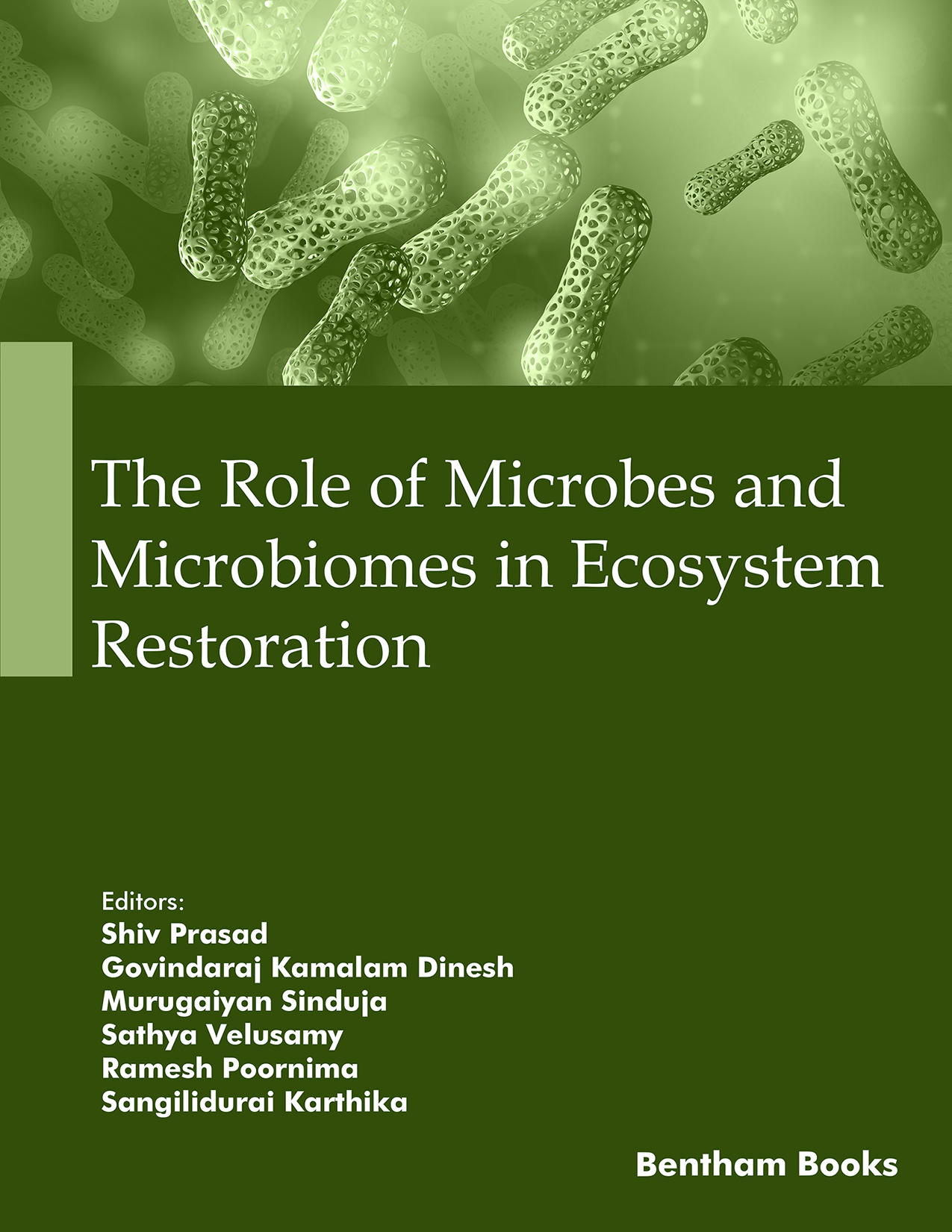The book series titled "Microbes and Microbiomes for a Clean and Green Environment" focuses on the roles of microbes and microbiomes, including environmental factors, basic and advanced microbial techniques, such as molecular biology, genomics, and metagenomics including the use of microbes in bioremediation, sustainable waste and wastewater treatment, plant growth, biotic and abiotic stress management and explores the role of microbes in protecting and restoring various polluted ecosystems.
At the beginning of the twenty-first century, one of the major concerns in the human ecological context is the destruction of ecosystems. Human activities have significantly impacted the environment. To address this pressing issue, the science of restoration ecology and its practical applications offer a potentially cost-effective and sustainable solution. Restoration ecology has become a leading topic in global environmental discussions. One of the key goals of the UN Convention on Biological Diversity from 2011 to 2020 was to restore at least 15% of the world's damaged ecosystems. Furthermore, in 2015, the UN formalized these global commitments by endorsing the 2030 Sustainable Development Goals, one of which explicitly targets ecological restoration.
Volume 1, "The Role of Microbes and Microbiomes in Ecosystem Restoration," examines how microbes and microbiomes, with their unique capabilities, can drive sustainable environmental restoration. The book series chapters are vital for promoting a clean and green environment, achieving sustainable plant productivity, and stabilizing the environment for human life.
In Chapter 1, Prasad et al., provide an overview of the causes of ecosystem destruction, the need for ecosystem restoration, the significance of microbiomes, and the challenges involved in adopting microbiomes for ecosystem restoration.
Pooja et al., in Chapter 2, focused on environmental factors such as vital edaphic (pH, temperature, oxygen, nutrients, and moisture), geographical, climatic (UV radiation, elevated CO2, temperature, permafrost thaw), and abiotic (drought, submergence, salinity, pollutants) involved in the establishment of microbes and microbiomes.
In recent years, microbial-assisted bioremediation has emerged as a promising and eco- friendly alternative for remediating toxic heavy metals (HMs). Hence, Naik et al., in Chapter 3, highlight the eco-friendly use of microorganisms, their mechanisms that contribute to the bioremediation of HMs, and their potential use in the future.
Biofertilizers are a viable alternative to unsafe chemical fertilizers in sustainable agriculture, preserving long-term soil fertility and fulfilling global food demand. Therefore, Chavada et al., in Chapter 4, describes biofertilizers, the role of various plant growth-promoting rhizobacteria, nitrogen-fixers, phosphorus, potassium, sulfur, and zinc solubilizers, and mobilizers in sustainable agriculture.
Human activities, knowingly or unknowingly, cause agricultural systems to face stress and resource quality degradation and depletion. Thus, in Chapter 5, Vijayalakshmi et al., discuss the application of microbes and microbiomes in biotic and abiotic stress management and focus on adaptive salt tolerance mechanisms in plants and other abiotic stress management.
The generation of wastewater increases multifold because of industries and the overexploitation of freshwater resources, which is responsible for deteriorating entire ecosystem quality and human health. In Chapter 6, Suganthi et al., present eco-friendly wastewater treatment technologies, the role of different microbial communities, including bacteria and fungi, actinomycetes, algae, and plants, and the range of polluted wastewater management.
Solid waste disposal is a significant issue that worsens daily as more people move into cities. In Chapter 7, Velusamy et al., provide the status of solid waste management in India, sources and types of solid wastes, various conventional solid waste management techniques, and the role of microbes in solid waste management through composting and anaerobic digestion.
Employing diverse and functional taxonomic groups by sequencing large quantities of environmental DNA or RNA utilizing genomic and meta-omic technologies is reported to quantify outcomes of ecological restoration projects precisely. Hence, in chapter 8, Nagendran et al., highlight the use of meta-omics techniques, metabolic network mapping, and functional gene editing with CRISPR/Cas technology to efficiently monitor the outcomes of ecological restoration projects by using various microbial bioremediation approaches.
In Chapter 9, Satpathy et al. provided details on metagenomic approaches, such as Multi- Locus Sequence Typing (MLST), MOTHUR, Quantitative Insight Into Microbial Ecology (QIIME), and PHAge Communities From Contig Spectrum (PHACCS), for restoring temperate and tropical ecosystems.
Soil microorganisms also play a fundamental role in ecosystem functioning and conserving plant diversity. Hence, in chapter 10, Prasad et al., delve into fundamental and conventional techniques and approaches that can be employed to maintain soil microbial populations. They focus on the possibility of creating protocols for regulatory or commercial objectives, emphasizing the significance of ecological restoration by using bioinoculants or microbial colonies in degraded sites.
In Chapter 11, Shivakumar et al., discuss the application of various molecular methods in monitoring ecosystem health, identifying microbial communities in ecosystems, and comprehending interactions between microbes and plants. The chapter also discusses the application of molecular techniques to restore damaged ecosystems, including using plant- microbe interactions to promote plant development in contaminated soils.
We sincerely thank all the authors for their outstanding contributions. Our gratitude also extends to the entire team at Bentham Science Publishers, especially Mrs. Fariya Zulfiqar (Manager Publications), for her exceptional management of this book throughout all stages of publication. We are confident that this volume in the book series will be widely appreciated by researchers and professionals alike.
Shiv Prasad
&
Govindaraj Kamalam Dinesh
Division of Environment Science
ICAR-Indian Agricultural Research Institute
New Delhi-110012, India
Murugaiyan Sinduja
National Agro Foundation, Taramani, Chennai
Tamil Nadu, India
Velusamy Sathya
Tamil Nadu Pollution Control Board, Chennai
Tamil Nadu, India
Ramesh Poornima
&
Sangilidurai Karthika
Department of Environmental Sciences
Tamil Nadu Agricultural University, Coimbatore
India

